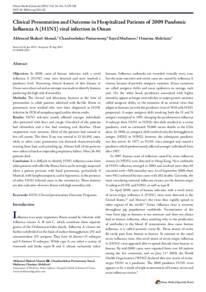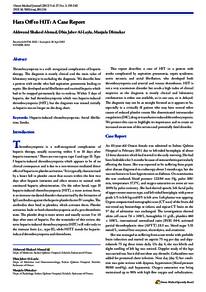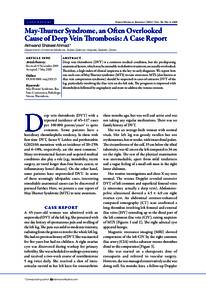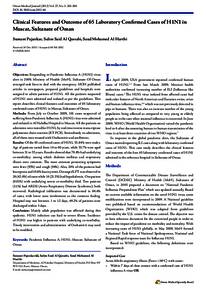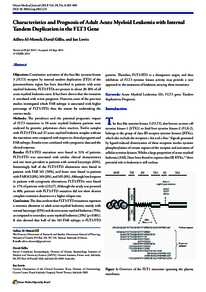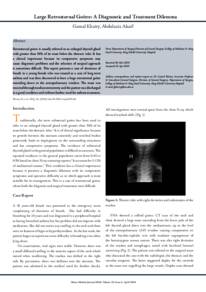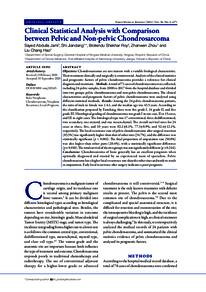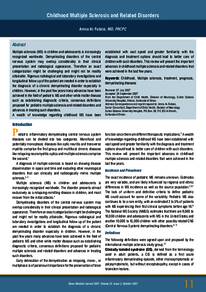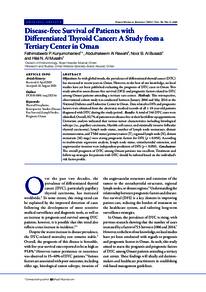Document
Clinical presentation and outcome in hospitalized patients of 2009 pandemic influenza A (H1N1) viral infection in Oman.
Identifier
DOI 10. 5001/omj.2011.82
Contributors
Publisher
Oman Medical Specialty Board.
Gregorian
2011-09
Language
English
English abstract
Objectives: In 2009, cases of human infection with a novel influenza A (H1N1) virus were detected and soon reached a pandemic level. Presenting clinical features of this disease in Oman were observed and an attempt was made to identify features predicting the high risk of mortality.
Methods: The clinical and laboratory features at the time of presentation in adult patients admitted with flu-like illness or pneumonia were studied who were later diagnosed as H1N1 infection by PCR of nasopharyngeal and/or throat swabs.
Results: H1N1 infection mostly affected younger individuals who presented with fever and cough. One-third of the patients had rhinorrhea and a few had vomiting and diarrhea. Chest crepitations were common. Most of the patients had normal or low cell counts. The chest X-ray was normal in 23 (41.8%) cases, while in other cases pneumonia was detected characteristically starting from base and extending up. Almost half of the patients were either in frank or impending respiratory failure. Nine (16.4%) patients died.
Conclusion: It is difficult to identify H1N1 influenza cases from other patients with a flu-like illness, but it can be strongly suspected when a patient presents with basal pneumonia, particularly if bilateral, with lymphocytopenia, and is hypoxemic, in the presence of other H1N1 infected cases in the community. These features are also indicative of severe illness with high mortality risk.
Member of
Resource URL
Citation
Ahmad, Akhwand Shakeel, Puttaswamy, Chandrashekar, Mudasser, Sayed, & Abdelaziz, Omaima (2011). Clinical presentation and outcome in hospitalized patients of 2009 pandemic influenza A (H1N1) viral infection in Oman. Oman Medical Journal, 26 (5), 329-336.
Category
Journal articles

